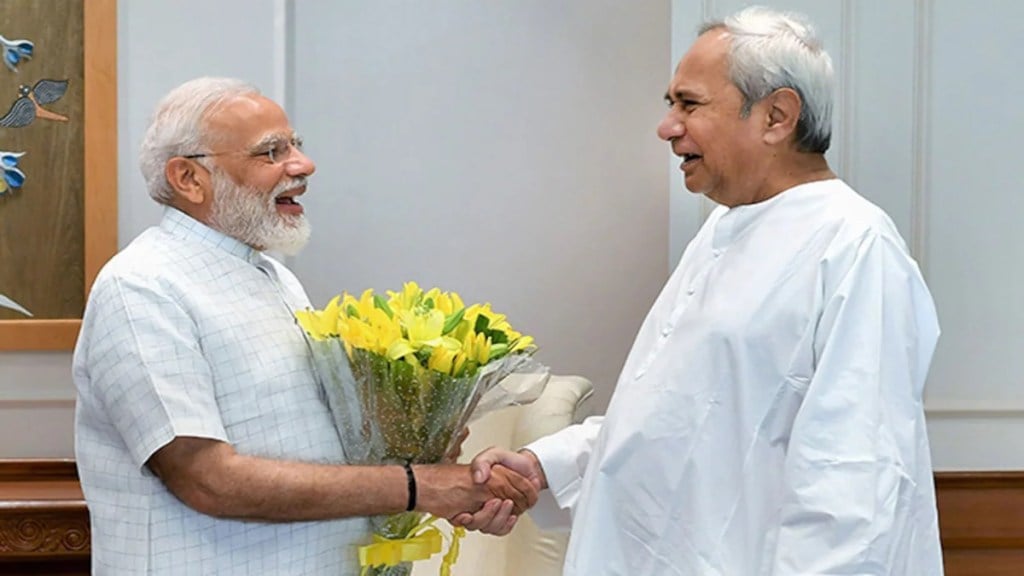The Naveen Patnaik-led Biju Janata Dal (BJD) is on the brink of reuniting with the BJP to contest the approaching Lok Sabha and Assembly elections. After breaking decade-long ties with the BJP 15 years ago, this alliance is ready to make a massive shift in Odisha’s political dynamics, considering BJD, once a staunch opponent, might now collaborate with its former adversary.
According to sources, the alliance negotiations have reached an advanced stage, with both parties reportedly close to finalising a seat-sharing agreement for the impending polls. An official announcement is anticipated soon, which could coincide with the anniversary of Patnaik’s decision to sever ties with the BJP in 2009.
In a series of meetings held on Wednesday, key figures from both the BJP and BJD discussed the terms of the alliance, sources told FInancial Express Online. Patnaik convened discussions with senior BJD leaders in Bhubaneswar, while BJP leadership conferred with party officials from Odisha at their headquarters in Delhi. These discussions point to the formation of a strategic partnership between the two parties.
Significance of BJP-NDA alliance
The potential reunion of the BJP and BJD marks a significant turning point in Odisha’s political landscape, presenting voters with a distinct choice between the alliance and of course, the Congress.
This likely union holds significant implications for both parties as well. Reuniting with one of Odisha’s major regional parties gives BJP a morale boost and advances its ambitious electoral targets. The partnership could also strengthen BJP’s standing in both the Lok Sabha and Rajya Sabha, further solidifying its national presence.
On the other hand, BJD aims to maintain its stronghold in the Odisha Assembly while using the alliance to boost its electoral prospects. Under the proposed seat-sharing arrangement, the BJP is expected to contest a greater number of Lok Sabha seats, while the BJD focuses on securing a majority in the Assembly.
While the alliance promises strategic advantages for both parties, it also poses challenges and uncertainties. Some within the BJP express reservations about the alliance, particularly regarding its impact on the party’s grassroots support and opposition status in the state, reported IE. Nonetheless, the BJD’s recent support for Union minister Ashwini Vaishnaw in the Rajya Sabha elections has paved the way for renewed cooperation between the two parties.
Why did BJD sever ties with BJP in 2009?
The alliance between the BJD and BJP in Odisha bore fruit with victories in two assembly elections and three Lok Sabha polls. Established in February 1998, the partnership flourished initially, witnessing successful campaigns in the Lok Sabha elections of 1998, 1999, and 2004, as well as the assembly elections of 2000 and 2004.
Regarded as one of the BJP’s staunchest allies within the NDA, the alliance faced a rupture in 2009 amid failed negotiations over seat-sharing. The breakdown was primarily attributed to the BJD’s insistence on reducing the BJP’s allocation of assembly seats from 63 to approximately 40 and parliamentary seats from nine to six.
This demand, deemed unreasonable by BJP leadership, prompted the withdrawal of support from Chief Minister Naveen Patnaik’s government, marking the dissolution of an 11-year political partnership. The BJD had labeled the withdrawal of support as an “act of betrayal.”

